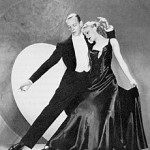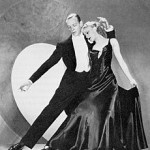So, do you really want to dance with Herman Munster? Probably not.
 We talked in yesterday’s blog about fats — and the way saturated fats are stable and don’t move or interact easily. Making our bodies use saturated fats is a little like trying to dance with a cumbersome partner. Think Herman Munster.
We talked in yesterday’s blog about fats — and the way saturated fats are stable and don’t move or interact easily. Making our bodies use saturated fats is a little like trying to dance with a cumbersome partner. Think Herman Munster.
But saturated fats aren’t all bad. At least, they wouldn’t be if we weren’t talking about our modern society and eating habits. Saturated fats are easily stored in the body where they provide insulation against heat and cold. That would be handy if you lived in the arctic. Saturated fats collect and act like safety belts for the organs. That would be useful if you lived a dangerous, active life with lots of falls and jarring. Dietary fats are also easily converted into fuel. That would be a blessing if food was in short supply. Nice to have a handy reserve so you can keep functioning even when you miss a lot of meals.
However, none of those things are true for most of us. We have air conditioners and heaters and our lives aren’t prone to lots of dangerous and vigorous activity. Most significant — we don’t have a lack of food. We have too much, which leads to too much fat storage and lumpy-looking figures.
Besides the obvious down-side of too much fat on the body, the saturated fats tend to clump together in the body and line the arterial walls. The arteries become rigid over time, which makes it harder for the blood vessels to provide oxygen to the cells. This type of fat build-up eventually causes heart disease or stroke.
That’s how fats became the villains of the dietary world and why doctors prescribe low/fat diets.
But it’s not the whole story. Yes, you should dance with Herman as little as possible, but you do need some fats — even saturated fats. The trick is balancing them with unsaturated fats.
More about the Fred-and-Ginger type of fats and why you need them tomorrow.
Eating to live and living for Christ,
Susan Jordan Brown

